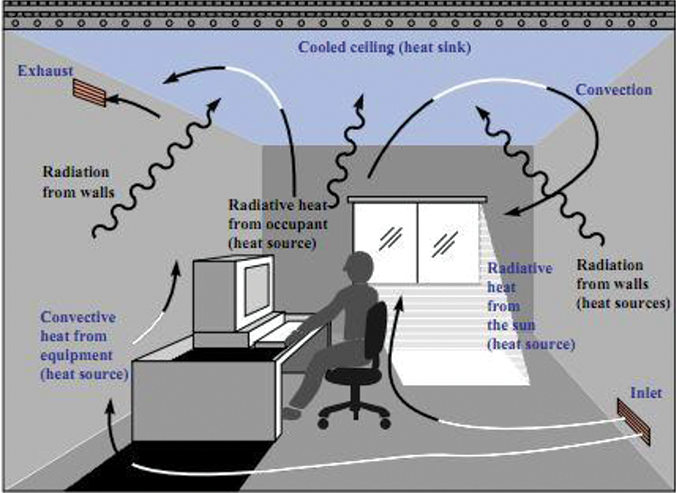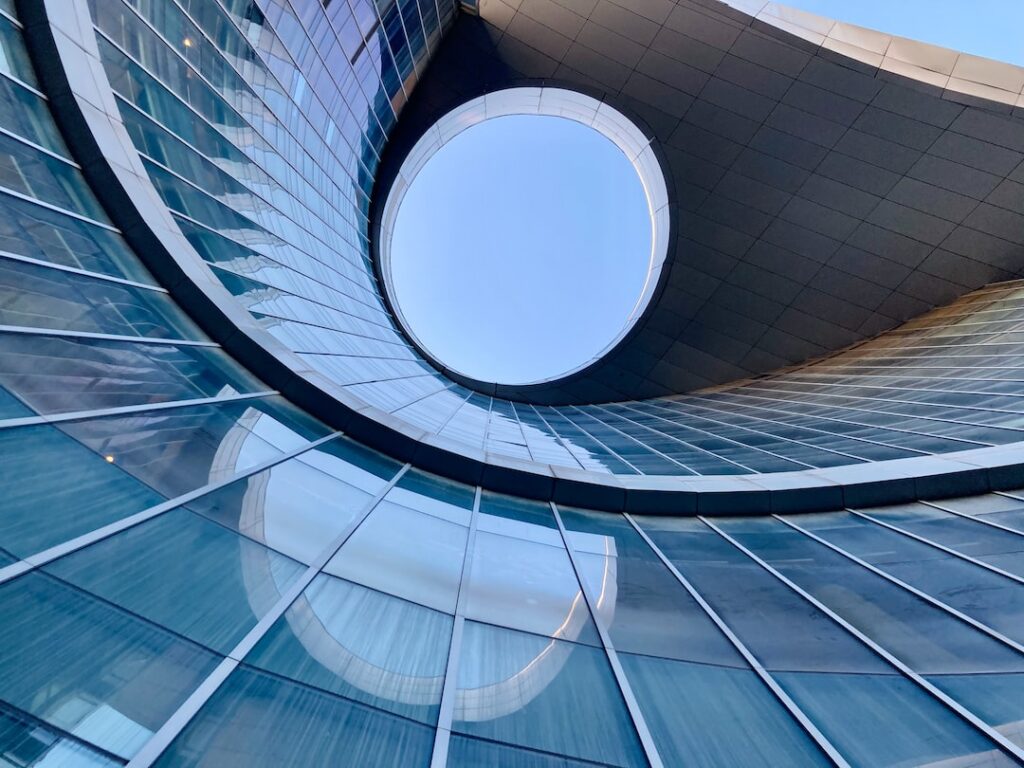In a world where resources are finite, it’s critical that we do everything possible to conserve our energy in order to reduce emissions and protect the environment. How can building design contribute to energy conservation and efficiency?
Building design plays a major role in this effort. Well-designed buildings are able to consume less electricity and other forms of energy while still providing comfort for their occupants.
Green building materials and technologies, regulations for sustainable construction practices, and financial incentives for eco-friendly projects are all part of how can building design contribute to energy conservation and efficiency.
With these strategies, we can achieve greater levels of sustainability that prioritize both form AND function with respect to conserving natural resources.
Table of Contents
Building Design and Energy Conservation
Sustainable building designs are an important part of energy conservation. By reducing energy consumption, buildings can reduce their environmental impact. Additionally, energy-efficient buildings can help to ensure that the electricity grid remains reliable by avoiding peak demand periods when more power is needed than what’s available.
How can building design contribute to energy conservation and efficiency?
There are a variety of strategies that can be used to improve the energy efficiency of a building. One way is to use passive solar design principles such as orienting windows towards the south in order to take advantage of natural sunlight during winter months and shading them from direct sun during summer months.
Another strategy is to use high-efficiency insulation materials and air-sealing techniques in walls, ceilings, and floors. Proper insulation is one of the most important aspects of an energy-efficient building as it helps reduce heat loss and gain which means less energy is needed for heating and cooling. The use of insulation materials such as fiberglass, cellulose, or foam can help improve the thermal performance of a building significantly.
Lastly, using efficient lighting fixtures with motion sensors or timers can help reduce electricity usage while still providing adequate illumination levels throughout the space.
Building design can be an effective tool in achieving energy conservation and efficiency, as it has the potential to reduce energy consumption significantly. The use of green building materials and technologies is a further step towards reducing our environmental footprint.
Green Building Materials and Technologies
Sustainable building materials are those that are produced in an environmentally friendly manner, with minimal waste and energy use. Examples of sustainable building materials include bamboo, recycled wood, straw bales, cork flooring, and natural stone. These materials can be used to create durable buildings that have a low environmental impact.
Renewable energy sources such as solar panels or wind turbines can be used to power buildings and reduce their reliance on fossil fuels. Solar panels convert sunlight into electricity which can then be used to power lights, appliances, and other electrical equipment within the building. Meanwhile, wind turbines generate electricity from the kinetic energy of the wind which is then stored in batteries for later use.
Smart technologies such as automated lighting systems or smart thermostats can also help improve efficiency by reducing wasted energy. Automated lighting systems turn off lights when they’re not needed while smart thermostats adjust temperatures based on occupancy levels or time of day to minimize heating and cooling costs. Other smart technologies such as motion sensors for faucets or toilets help conserve water by only running when necessary.
Taking advantage of natural light is another great way to save on energy costs while improving indoor comfort levels at the same time. By installing skylights strategically placed around your building, you can maximize daylight penetration into interior spaces while minimizing artificial lighting needs during daytime hours.
Finally, choosing sustainable construction materials such as bamboo flooring, low VOC paints, and recycled glass tiles can have a positive impact on both the environmental footprint and operational costs of running a building over its lifetime.
Green building materials and technologies are essential for creating sustainable buildings that conserve energy and resources. Regulations and standards can help ensure these efforts are successful.

(Source)
Regulations and Standards for Sustainable Buildings
Local governments often have regulations in place that require buildings to meet certain standards of sustainability. For example, some cities may require new construction projects to use energy-efficient materials or renewable energy sources.
Many states have already adopted building codes that promote green building practices such as efficient insulation and water conservation measures.
On the federal level, the U.S. Green Building Council has established LEED certification requirements for all new construction projects receiving government funding or tax credits.
The Leadership in Energy and Environmental Design (LEED) rating system is a widely recognized standard for measuring sustainable building design and performance. To achieve LEED certification, buildings must meet certain criteria related to energy efficiency, water conservation, indoor air quality management, material selection processes, and more.
Buildings can earn points based on their performance in each category which is then used to determine their overall score on the LEED scale ranging from Certified to Platinum level.
Regulations and standards for sustainable buildings provide a baseline of energy efficiency, but financial incentives can help to further encourage building owners to prioritize green initiatives. Let’s look at the various financial incentives available for green projects.
How Can Building Design Contribute to Energy Conservation and Efficiency?
Here are 12 ways that building design can help conserve energy.
1. Improved Insulation
Commercial buildings with improved insulation are more energy efficient as they reduce the amount of heat that escapes from the building in winter and keep it cooler in summer. This helps to lower heating and cooling costs significantly.
2. High-Performance Windows
Installing high-performance windows can also help to improve a commercial building’s energy efficiency. Double-glazed windows can reduce energy consumption by trapping air between two panes and creating an insulating barrier that prevents heat from escaping through windows during cold weather conditions. This type of window also reduces noise pollution and improves comfort levels inside buildings due to its soundproofing capabilities.
3. Solar Panels
Solar panels are becoming increasingly popular for businesses looking to reduce their carbon footprint while saving money on electricity bills. Photovoltaic (PV) cells convert sunlight into electricity which can be used directly or stored in batteries for later use when needed most – like during peak demand times when prices are highest!
4. LED Lighting
Replacing traditional lighting fixtures with LED bulbs is one of the easiest ways to save energy in a commercial building as LEDs use up to 90% less power than incandescent lights and last 25 times longer too!
5. Natural Ventilation Systems
Natural ventilation systems allow fresh air into a building without using any mechanical equipment, meaning there is no need for costly fans or air conditioning units running all day long.
6. Occupancy Sensors
Installing occupancy sensors throughout a commercial space can help reduce unnecessary energy usage by automatically turning off lights when no one is present in a room, ensuring only necessary lighting is being used at all times.
7. Programmable Thermostats
Programmable thermostats enable you to set different temperatures depending on whether it’s night or day, allowing you to make sure your business isn’t wasting valuable resources trying to maintain an optimal temperature 24/7.
8. Water Conservation Fixtures
Low-flow toilets, faucets, and showerheads drastically cut down water consumption while still providing adequate pressure levels – helping both conserve resources and save money.
9. Green Roofs
A green roof consists of vegetation planted atop a flat surface such as an office rooftop. This helps insulate the structure below from extreme temperatures while also absorbing rainwater runoff before it enters local waterways.
10. Heat Recovery Ventilators (HRVs)
HRVs work by transferring heat between two streams of air – incoming fresh air and outgoing stale exhaust – thus creating an efficient system that reduces overall heating requirements in buildings.
11. Greywater Recycling Systems
Greywater recycling systems collect wastewater from sinks, showers, and baths then filter and purify it so that it can be reused again instead of just going down the drain – making them perfect for businesses looking towards sustainability initiatives.
12. Rainwater Harvesting Systems
Rainwater harvesting systems capture rainfall and store it for later use. This allows businesses to access clean water without having to rely solely on municipal sources which may not always be available due to drought or low water pressure.
Conclusion
How can building design contribute to energy conservation and efficiency? By utilizing green building materials and technologies, adhering to regulations and standards for sustainable buildings, and implementing best practices for efficient building design, we can create modern structures that will reduce our environmental impact. Ultimately, this will help us move towards a more sustainable future where energy efficiency is the norm.
We need to take action now in order to reduce our carbon footprint and conserve energy. Building design plays a key role in creating sustainable, efficient structures that can help us reach this goal. By implementing these strategies on how can building design contribute to energy conservation and efficiency, we will be able to reduce our buildings’ environmental impact.





